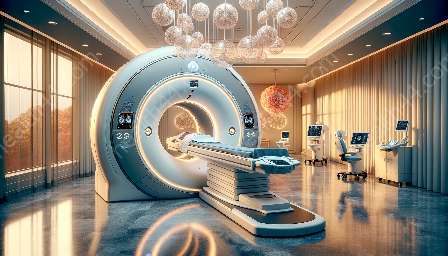Laser therapeutic devices are revolutionizing the way medical professionals approach treatment and patient care. This innovative technology has significant implications for medical imaging devices and other medical equipment, enhancing diagnostic and therapeutic capabilities.
The Impact of Laser Therapeutic Devices on Medical Imaging
Laser therapeutic devices have a profound impact on medical imaging, providing clinicians with new tools for diagnosis and treatment planning. By leveraging the unique properties of laser light, these devices can be used to enhance imaging modalities such as MRI, CT scans, and ultrasound.
Benefits of Laser Therapy in Medical Imaging
One of the key benefits of laser therapy in medical imaging is its ability to improve contrast and resolution. By selectively targeting specific tissues or biomarkers, laser light can enhance the visibility of anatomical structures and pathological features, leading to more accurate diagnoses and treatment monitoring.
Laser therapeutic devices can also be used in conjunction with contrast agents to aid in the visualization of vascular and functional processes, offering insights that may not be achievable through traditional imaging techniques alone. Furthermore, the non-invasive nature of laser therapy minimizes patient discomfort and reduces the need for contrast agents with potential side effects.
Enhancing Treatment Capabilities with Laser Therapy
Beyond their impact on medical imaging, laser therapeutic devices play a crucial role in the treatment of various medical conditions. For example, in the field of oncology, laser therapy is employed for photodynamic therapy (PDT) to target and destroy cancer cells. This targeted approach minimizes damage to surrounding healthy tissue, improving the overall effectiveness of cancer treatment while reducing side effects.
Additionally, lasers are utilized for tissue ablation, such as in the treatment of tumors or abnormal growths. The precision and control offered by laser therapeutic devices enable clinicians to precisely target and remove pathological tissue, offering a minimally invasive alternative to traditional surgical procedures.
Complementing Medical Devices & Equipment
Not only do laser therapeutic devices enhance the capabilities of medical imaging, but they also complement a wide range of medical devices and equipment. In surgical settings, lasers are used for cutting, coagulation, and tissue manipulation, offering enhanced precision and minimizing the risk of complications.
Moreover, laser therapy can be integrated with other medical devices, such as endoscopes and catheters, to perform minimally invasive procedures with improved visualization and therapeutic outcomes. The synergy between laser therapeutic devices and existing medical equipment amplifies the potential for advanced interventions across various medical specialties.
Future Prospects and Innovations
As laser technology continues to advance, the integration of laser therapeutic devices with medical imaging and other medical devices & equipment is poised to drive further innovation in patient care and medical research. Emerging applications, such as laser-induced thermotherapy and targeted drug delivery, hold promise for revolutionizing treatment strategies and improving patient outcomes.
With ongoing research and development, the synergy between laser therapeutic devices and medical technology is set to expand, empowering healthcare professionals with versatile tools to address complex medical challenges and enhance quality of care.


